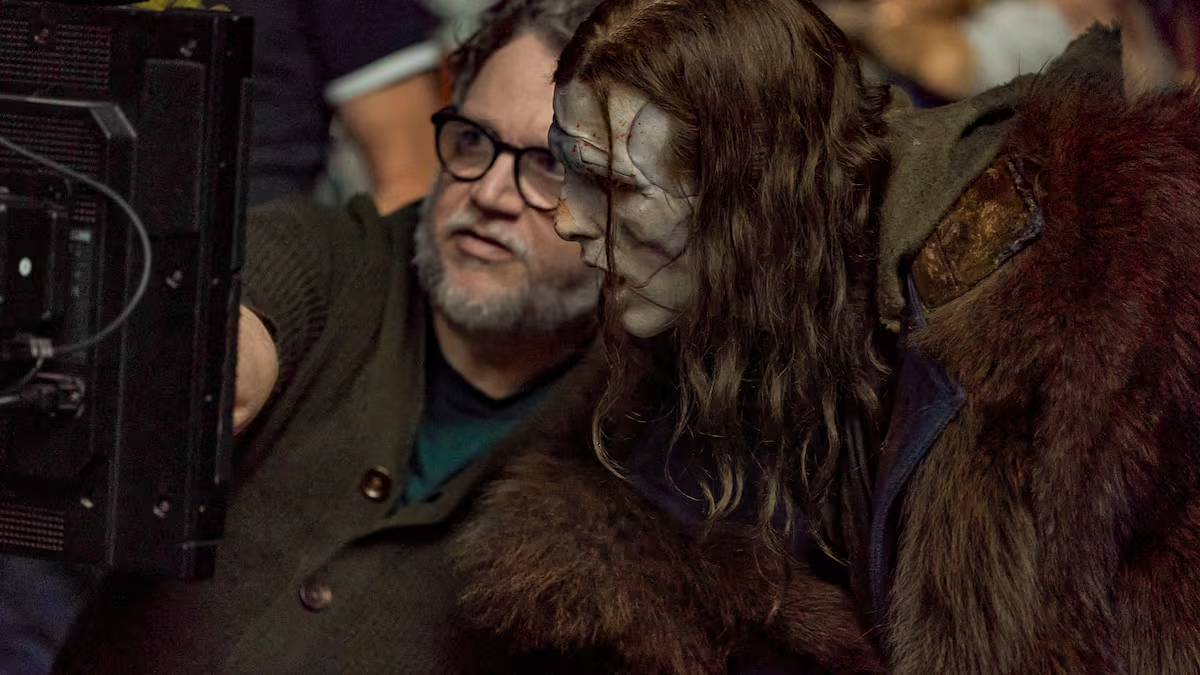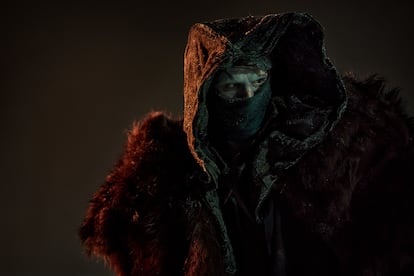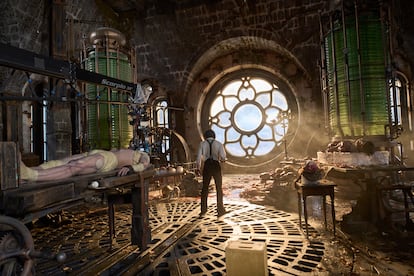
For Guillermo del Toro, the material for his films comes from his memories, his traumas and his favorite monsters growing up. Frankenstein —his most recent film—, as he says in an interview conducted at the St. Regis hotel in Mexico City, was the dream of an 11-year-old provincial boy. He remembers riding his bicycle to a supermarket belonging to the defunct Maxi chain and buying one wallet (paperback book), from the Bruguera publishing house, of the masterpiece of the writer Mary Shelley and he said to himself: “I will make this film”. Fifty years later, at 61, the director from Guadalajara, passionate about his country, admits that he couldn’t skip Mexico to present a film which, like many of his projects – as he admits – “just missed” and which allowed him to “exorcise” his own story.
In a room designed to serve the media, surrounded by props, with a book of human anatomy like that of Victor Frankenstein, a replica of a skull or a pen in the inkwell, Del Toro, always smiling and friendly, cannot leave aside the “beauty” of a work that has marked him since he was a child and which he claims is an autobiography of Shelley. She says her adaptation, a gothic, fantasy and modern take on the British author’s book, seeks to fill biographical gaps that have not been actively used, but are part of the writer’s other works. Like the tyrannical father figures or the idea of war that distinguishes the romantic movement.
“Romanticism comes from the recognition of death and love. And how they can work together. Romanticism is a very violent, very iconoclastic time. Very anarchic, trying to destroy what was seen as a hypocritical society. People forget that Mary Shelley was 16 when she met Percy Shelley (her husband), who was 21 and married. They decided to run away against all the family opposition. He brought her a poison, laudanum, which was a opium tincture. “Drink this poison and I will shoot myself in the head and we will live forever together,” he told her. Romance for me is English. becoming Mexican. Entering the melodrama at ease,” Del Toro says, laughing.
The filmmaker, winner of three Oscars, one as best director for shape of water (2018), he still doesn’t understand how his was adapted Frankensteinbecause of the “astronomical numbers” that he had against him and which, despite this, he developed for more than 20 years. Just like with his version of Pinocchio (2022), everyone told him no, until Netflix gave his creativity the green light. The giant of streaming prepared del Toro to Before, this Monday, in keeping with the greatness of his most recent film. The Ancient School of San Ildefonso – an infrastructure dating back to 1583 – in the historic center of the capital, was set up as a decorative and symbolic setting for another of the stories that the director is usually interested in telling: about childhood, children or terror.
“For me, the biography of humanity is that of destroyed families. So, all great movements, such as tragedy, Shakespearean or the analysis of history, are absences of affection at an early age. Whether it is the Napoleonic War or political corruption, it is the absences of figures that complete the self in childhood. You see? Blade 2 (another of your films)? It’s the story of a vampire son who once again says to his father, “Why did you make me like this?” AND Frankenstein It’s basically the story of another child created by a wounded child to make up for his childhood and reproduce its brutality. It’s not that the work is a metaphor, our life is the metaphor. It’s very curious when you say, ‘I’m not going to repeat what I saw my father do wrong,’ and at 41 you say, ‘Oh, at what point did I become my own boss?’” he adds.
The parallels between Del Toro’s feelings, the work and his characters are undeniable. He is also director of Pan’s Labyrinth (2006) took the liberty of capturing a moment in the novel that had not been seen in the cinema until now, namely the creation of the creature. The adaptations of Frankenstein They have always shown us the monster and the lightning that gives it life, but not the antechamber that leads to it. The director from Guadalajara did not want to show that moment as a moment of terror, but, on the contrary, as a moment of “joy”. It was for this reason that he decided to film that sequence as a musical, comparing Oscar Isaac (Victor Frankenstein) to an orchestra conductor who plays the score, plays a waltz and begins the structure of the creature.
“That moment, imagine, you have a 20 or 30 year old boy who wants to create a creature. That moment is when he is most excited. He is happy. And it has to be a moment of excess of anatomy, blood, tendons and muscles. From there comes the hangover that for all of us who were born in Mexico makes us ask: what do we do with the leftovers? The questions that someone from the first world doesn’t ask, we ask. Víctor throws them. away. The leftovers. That’s how he sees humanity. His idea doesn’t count.

“Because I’m Mexican”
Del Toro, as usual, received rock star treatment when he arrived with his protagonists at the San Ildefonso school. He spoke to those present on the red carpet. He took photos, autographed memorabilia, photos and posters brought by his fans before the screening of his film. The fuss was so great that, after introducing the film, he said he would bring his actors, Isaac and Jacob Elordi (who plays the creature), who had also arrived in Mexico City, “to get busy” during the screening of the film and that they would return later for a brief conversation with Netflix co-executive director Ted Sarandos, who was also at the theater.
Two and a half hours later, with a bit of tequila and pulque on top – as del Toro admitted – the three went back to talking about the film. Although Sarandos’ questions were asked in English, both Isaac, of Guatemalan origin, and the director made Spanish prevail in the exchange of ideas. Except for Elordi, who took most of the shouting in his brief speeches in English and in his attempt to say “Thank you very much” to his fans in attendance.
The Mexican director is a defender of old-fashioned cinematographic creation, which always tries to minimize computer-generated images, and of art “made by humans for humans”. Sarandos asked him why he puts so much effort into the details and almost artisanal work he puts into each of his projects. Amid the wave of application and use of artificial intelligence in the audiovisual industry, Del Toro, very encouraged, responded with an answer that has already become a hallmark in his speeches and which elicited applause from those present: “Because I am Mexican. The way of seeing art in Mexico is with two hands and two eggs. We don’t have the digital resources, damn it, but we have the craftsmanship, the art, the vision, the color, the texture. I won’t make films like a first world director, even if it is in the first world. Ingenuity, how to make something seem bigger, more beautiful, more luxurious, is the whole Mexican instinct.

After the “horrific” experience Del Toro had with the Harvey brothers and Bob Weinstein, who took away creative control of his first Hollywood film, imitate (1997), and tried to sink his career before it took off to the stratospheric level it found itself at, the Jalisco director resolved to never lose the creative direction of his projects again. This is why he also knows how to choose his battles. This is in reference to the limited version of Frankenstein in theaters because of Netflix’s business model.
“I fight about the size of the screen. I care that this film exists in theaters, but what I fight most is about the size of the ideas. That’s the vital thing. The vital thing is that the size of the ideas is never tamed and that we always aim to make great films, films that transport you and films that show you the work of hundreds of people who care that you’re sitting there,” he said.





